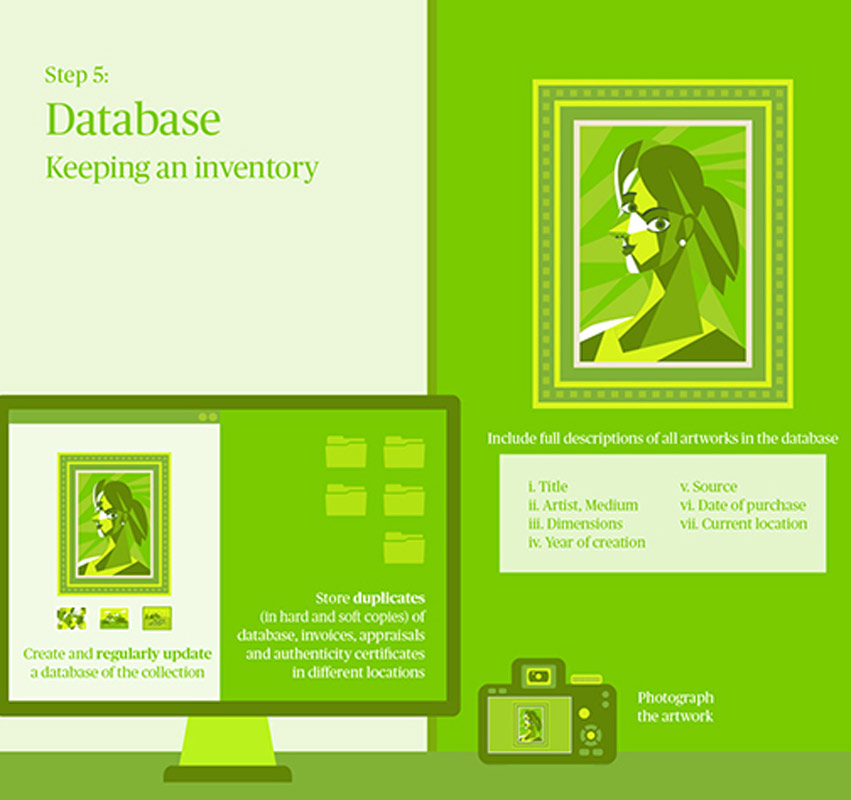5 steps to protecting your art collection

You may have just made your first art purchase, or added another valuable piece to your art collection. Either way, are you aware of how to transport, store or display your valuable art pieces? There may be accidents or natural catastrophes that are beyond your control, but there are ways you can prevent any losses or damage to your artwork in the instance that these events happen.
Check out these 5 steps you can adopt to protect your art collection.
-
Preparing your artwork for travel
In today’s world, there are more ways to purchase art than there used to be. You can now buy by bidding in an auction, visiting an art gallery overseas and even purchase them online. The artwork will have to be sent to your home or sometimes personally brought back after you have bought them. Damage to artwork more commonly occurs during transit due to the risk of improper handling.
Ensure that you work with a reputable art shipper and handler who is experienced in packing and transporting artwork. Avoid using a general mover when packing your valuable collection. A good art transporting company should also be able to provide you advice on rules with regard to customs and taxes. Check with them if they will be using third party vendors and if the transit will entail temporary storage in other locations. If so, ensure that you are aware of the experience of the vendors in handling similar artwork and make sure that the storage providers have adequate fire and security measures in place.
Request for condition reports to be made by the handlers before packing and after unpacking. This is to ensure that the conditions of the artwork are not compromised during transit. The condition report should include a detailed description of the pieces, high-resolution photographs, and documentation of any pre-existing damage. For on road transit, trucks used should have climate control measures, a good locking system and a GPS tracking system. To ensure that the vehicle is never left unattended, the truck should be staffed with two drivers or art handlers on every trip. Lastly, explore different options for insurance coverage for both international and local transit. Choose one that would be suitable for your needs.

-
Creating a safe environment for display
While an art piece may look its best when they are illuminated by light, placing it under direct sunlight or artificially generated light, may cause the quality of the paint or other medium used to deteriorate over time. Ensure that you use proper artificial lighting and frame the pieces under UV-protective glass, where possible. Additionally, the ideal indoor conditions include temperatures ranging from 21°C to 24°C and humidity levels between 45% and 55%.
When mounting the artwork, ensure that you do so securely and use the right tools to prevent damaging the pieces. If you are not sure how to do so, hire a professional art installer or check with the gallery if they are able to do this for you. Take note to display the artwork in a safe environment where there is low risk of breakage. Avoid displaying artwork where there is busy human traffic or at blind corners where risk of accidental breakage is high.
Install fire alarms and smoke detectors to minimize loss due to fire. Do not install water sprinklers above artwork as the water may cause damage to artworks. Also ensure that all points of entry are fitted with burglar alarms, CCTV cameras and motion detectors. Windows and skylights should also have glass break sensors installed.
Art can exist in many forms, from a 4-metre tiger shark preserved in a tank to a statue made of the artist’s blood. If you are a collector of such contemporary pieces made from unusual medium, ensure that you are familiar with the steps on how to maintain them. Sculptures or other pieces of artwork displayed outdoors should also be able to withstand the weather and harsh elements. Educate yourself on how to maintain these pieces of art and adhere to the recommended maintenance or cleaning schedule.
Did You Know?
A basic home and contents policy rarely can cover the full value of artworks. Chubb’s Masterpiece can cover your art collection for what they’re worth, instead of up to a standard limit. Protect your precious collection with Masterpiece.

-
Factors to consider when selecting an art storage facility
As your collection grows, you may need to store part of your art collection offsite due to space constraints at your home. Other times, you may simply be relocating or moving, and need to store your valuable pieces of art in a safe environment until the new display area is ready. Whatever the case may be, ensure that you select an art storage facility carefully. Here are some factors to consider:
1. Ensure that the art storage facility does not have any adjacent hazardous exposure such as being next to a paint factory.2. Check that the building and construction are in an acceptable condition.
3. Review the fire and security guidelines of the storage facility to ensure that they are compliant with the industry standards.
4. Ensure that there are humidity and temperature controls.
5. Make sure that the artworks are to be placed on elevated racks or shelves. This is preferred so as to prevent damage to artworks due to flooding or ponding.
6. Speak with the staff to ensure that they are experienced in handling artworks in all forms.
7. Review their inventory management systems to ensure that your pieces are in good hands.
.jpg)
-
Updating the value of your collection
Ensure that the values of all the pieces in your collection are up-to-date at all times. This will prevent inadequate insurance coverage in the event of a claim should an incident occur.
The value of each piece can be affected by a variety of factors such as the recent sales results of artwork by the same artist, the growing prominence of the artist which results in higher demand, important provenance etc. of the art work.

-
Keeping an updated inventory
Create and regularly update the inventory of your entire collection. Ensure that you store duplicates of the record in hard and soft copies, preferably in different locations. A comprehensive record should include copies of invoices, appraisals and authenticity certificates of each piece of art work. The inventory should have a full description of each piece with the following details:

1. Title
2. Artist
3. Medium
4. Dimensions
5. Year of creation
6. Source
7. Date of purchase
8. Current location
9. High resolution photograph of the artwork
The steps above may seem like a lot to manage. Being an art collector entails protecting your collection to the best of your ability. You may enjoy your artwork and the exciting process of building a collection, but must also realize that you are in possession of pieces of history and must look after them for generations to come.
At Chubb, we are committed to protecting you and your prized collection and possessions. We go beyond just providing you with a comprehensive insurance coverage. We also deliver on our promise to help you lower risks and protect your collection.
A copy of the "5 Steps to Protecting Your Art Collection" full infographic can be downloaded here.
No part of this article may be reproduced in any written, electronic, recording, or printed form without written permission of Chubb.
Disclaimer - The content of the above article is not intended to constitute professional advice. Although all content is believed to be accurate, Chubb Insurance Singapore Limited (Chubb) makes no warranty or guarantee about the accuracy, completeness, or adequacy of the content of this article. Users relying on any content do so at their own risk.

Protect your home and valuables
Get a quote online or leave your contact details and our representatives will get in touch with you.